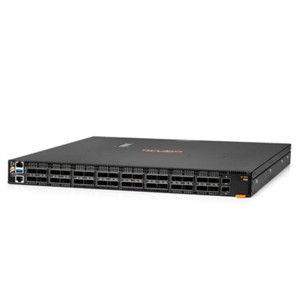You have worked to develop and integrate new cloud technology into your tech stack to:
- Create efficiencies in your processes
- Integrate existing technologies so data can be seamlessly shared to those that need it across your organisation, no matter their location securely
- Improve user experience so staff can access the right information and tools they need to perform their roles to provide incredible service to your customers.
Sounds great so far and your digital transformation projects seem to be on track, but are your remote and branch workers getting the performance you expected or is there are bit of latency and lag starting to creep in?
Without addressing your WAN architecture as a critical component of your digital transformation program, you may not be getting the optimum out of your network. That’s why SD-WAN is such a hot topic right now.
4 ways that SD-WAN supports your transformation dream
59% of enterprises believe their cloud usage will expand beyond their initial estimates this year due to Covid-19 forcing remote work and work from home models. And while the hype around SD-WAN tends to focus on cost savings, in this article we’re also going to cover 3 other key factors that make SD-WAN a critical technology solution to support your business.
They are:
1. Maximizing data security
2. Realizing your cloud technology opportunities
3. Optimizing user experience
4. Saving you money (it makes the whole business case for SD-WAN much easier)
1. Maximizing data security
Maintaining data security becomes so much easier with SD-WAN utilising central orchestration rather than the traditional MPLS bike-wheel. High-quality SD-WAN solutions contain central tools for easy updates to your controls and security policies. You can respond to any perceived threats to your network with agility and speed, and include service chaining to advanced third-party security services. With security threats a growing issue for organisations, some may find this one of the most valuable benefits of using SD-WAN.
2. Realising your cloud technology opportunities
The explosion in the use of cloud-based technologies means that private circuits are being used for traffic destined for the internet. Many organisations are creating complex hybrid networks to support the performance issues from this increased WAN traffic. However, these solutions can still dilute the benefits that cloud applications have, particularly around speed and performance. This may go a long way to explain why 85% of organisations feel that they are years away from fully realising their cloud benefits.
SD-WAN can both support your existing WAN architecture and your cloud-based applications and significantly improve the performance of both. The best SD-WAN solutions use intelligence to identify any breaches of latency, packet loss or jitter thresholds and redirect application traffic along the best route. They have self-learning capabilities to identify and adapt to any changes in your network in real-time without intervention. This means your cloud-based applications consistently achieve the performance benchmarks you planned for.
3. Optimizing user experience
Quality of Experience (QoEx) is key for your organisation’s end-users. They expect to be able to use their technology easily and for it to respond to their needs quickly, every time.
With SD-WAN, application traffic is prioritised so that user experience is maintained. Intelligent splitting and routing are used to orchestrate traffic and manage payloads to ensure that your networks are not congested, and business-critical traffic gets a clear run.
If there are instances of faults or performance issues, SD-WAN can provide warning to network managers, or can use intelligent monitoring to automatically identify these issues and divert traffic to maintain services before they escalate. This allows services to be proactively managed to avoid performance issues and interruptions to end-users. These are people who ultimately are at the coal-face and rely on technology so they can perform their jobs, engage with and service customers, and drive the revenue of your organisation. Downtime for them, means downtime for your business. SD-WAN means the issues of interruption due to congestion are a thing of the past.
4. Saving you money
So, let’s now tackle the big one. When making a case for new technology, the thing executives and those that can support a business case look at is the cost, pay-back and ROI. SD-WAN is much hyped as a contemporary network solution with significant cost savings to business such as:
- Reducing the number of costly MPLS network links that need to be maintained
- Reduced bandwidth costs while still seeing an increase in available bandwidth for performance
- Eliminating the requirement for expensive 3rd party service provider pipes.
For one of our customers, the savings here were significant – the project achieved payback in 2 years, and over 5 years their total investment was half of what it was.
While the amount of traffic you have will impact the costs savings, we want to point out again that traffic and costs are not the only factors that make SD-WAN the essential technology for today’s business.
Finally
SD-WAN provides the foundation for a secure, high performing network that will help you realise all the opportunities for improved operations, flexibility of work, ongoing upgrades and improved user experience. All the things that cloud technology solutions are also supposed to offer your organisation. While SD-WAN will save you money in specific, quantifiable areas, the real value that it brings to your organisation is in making your digital and cloud transformation dream a reality through improved security, optimal performance and outstanding QoEx.
Site References:
SD-WAN Explained https://www.silver-peak.com/sd-wan/sd-wan-explained [Accessed 23 October 2020]
Parsons, C., 2020. SD-WAN is all about cost savings, right? Telstra Blog.[Online] Available at: https://www.telstra.com.au/business-enterprise/news-research/articles/sd-wan-is-all-about-cost-savings [Accessed 23 October 2020]
Weins, K., 2020. Cloud Computing Trends: 2020 State of The Cloud Report | Flexera Blog. [online] Flexera Blog. Available at: https://www.flexera.com/blog/industry-trends/trend-of-cloud-computing-2020/ [Accessed 22 July 2020]


